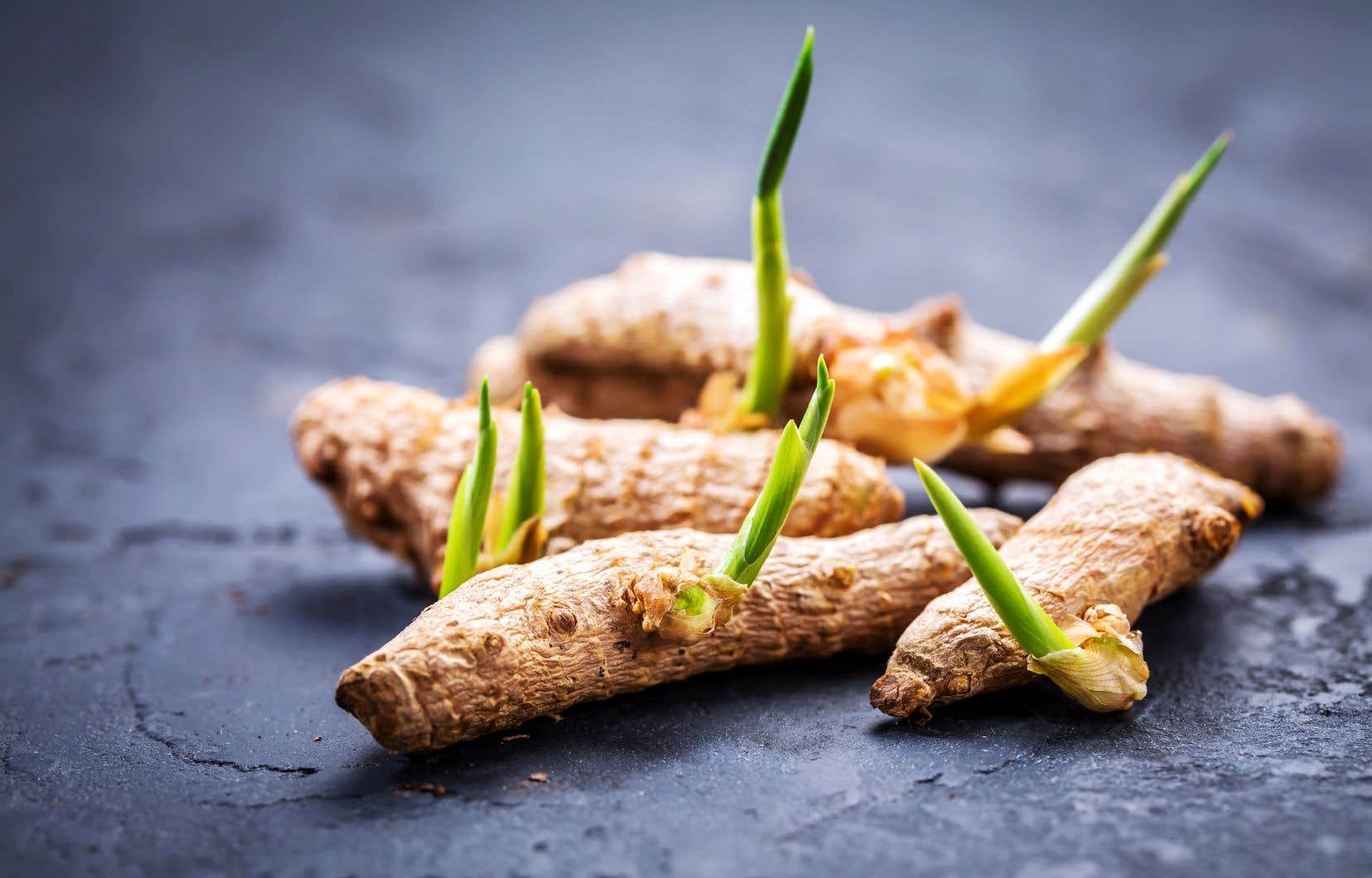This text is part of the special Pleasures notebook
It’s easy to have generous harvests of turmeric when you know the secret, even in small spaces! The key lies in growing in pots and protecting them from the cold.
Start growing in February, or later, if you have the necessary equipment to do it indoors (lighting, greenhouse, etc.). The goal is to allow your plants to take full advantage of the warmer season once they are outside.
Select the rhizomes
Opt for fresh rhizomes, preferably organic, as traditionally grown turmeric may have been treated to prevent germination.
Also be sure to choose pieces of rhizome with a high number of nodules (the more, the better!). This rule also applies to ginger.
Prepare for germination
Do not hesitate to divide the pieces of rhizome if they have several nodules and are of an interesting size. Generally, two or three nodules is an optimal number. Remember that the larger the piece, the better your plant will grow.
You must germinate the turmeric pieces before placing your rhizomes in the ground. To achieve this, you can place them in a little water, without submerging them, or wrap them in damp paper towels. This step requires patience: be sure to change the water or moisten the paper regularly. Germination can occur within a few days or weeks.
Prepare the soil and container
It is important to choose the right pot to guarantee the success of the harvest. A crucial element is to use pots with multiple drainage holes for water drainage or opt for geotextile pots. When it comes to pot size, pay more attention to its planting surface than its depth. Choose a wide container rather than a narrow and deep one. Also make sure it is light enough to move it easily even when it is filled with soil.
Plant the rhizomes
• Depth: 2 to 4 inches with sprouts side up.
• Distance: Plant your rhizomes 4 to 6 inches apart. Turmeric adapts well to small spaces and therefore does not require very large intervals.
• Soil: When you plant your rhizomes, you can opt for a ratio of 70% potting soil and 30% compost.
A month after planting, beautiful little stems should emerge from the ground. Large green leaves will unfold later and the plant can grow up to 3 feet tall.
Maintaining turmeric
If your turmeric plant gets enough direct light, you may decide to keep it indoors. Otherwise, it is possible to place your pots outside, provided that there is no longer any risk of frost. Given turmeric’s sensitivity to cold, it is best not to take it out too soon.
• Brightness: full sun, but the plant tolerates partial shade well.
• Watering: Since it is a tropical plant, it needs plenty of water as well as excellent drainage. Irrigate the plant abundantly while ensuring that the water does not stagnate in your pots.
• Nutrients: Turmeric likes rich soil. Do not hesitate to feed the soil with compost and use algae-based emulsions when watering to encourage its expansion.
What to do with your turmeric in the fall?
As soon as the chance of frost approaches, move your pots indoors to allow the plants to continue developing their rhizomes in the remaining weeks before harvest. A more mature rhizome is tastier and keeps better. To ensure they continue to grow, place your plants under a window in your house, in your garage under a grow light or even in your greenhouse.
Harvest and store
After ten months of growth, it is time to harvest your turmeric, preferably as winter approaches. To do this, you have two options: spread a tarpaulin on the ground and empty the contents of the pots onto it or use a small shovel to gently remove the rhizomes from the soil. Rinse them carefully afterwards to remove all the soil. It is very likely that your harvest will exceed your needs for the year: you can therefore sort the rhizomes and keep the most interesting in terms of size and nodules for your next planting. Keep them in a bin or box with wood shavings, which you then place in a cool, dry place. No need to have a cellar to store your rhizomes: all you have to do is put them in the coolest cupboard in your house!
This content was produced by the Special Publications team at Duty, relating to marketing. The writing of the Duty did not take part.
